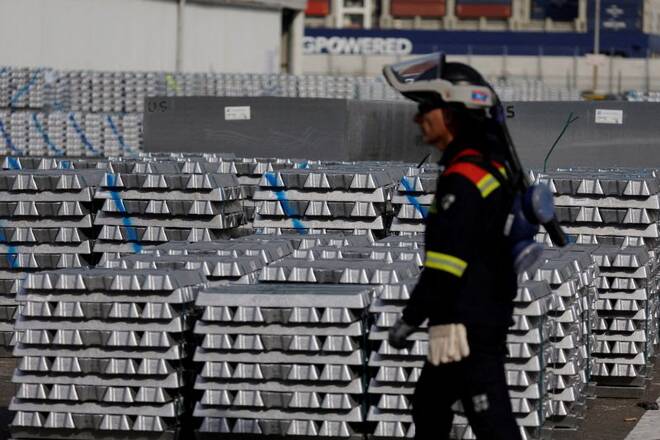Advertisement
Advertisement
Growth constraints to shackle industrial metals for a few more months
By:
By Pratima Desai LONDON (Reuters) - Industrial metals markets hoping for improving demand and a price rally may have to wait a few more months with the headwinds of slow growth likely to dominate the economic landscape for some time.
By Pratima Desai
LONDON (Reuters) – Industrial metals markets hoping for improving demand and a price rally may have to wait a few more months with the headwinds of slow growth likely to dominate the economic landscape for some time.
Since hitting record highs in March on a rally fuelled by worries about disruptions to commodity supplies from Russia, copper has plummeted 22%, aluminium 41% and zinc 39%.
Nickel and tin have slumped 50% and 70% respectively. Battery metal lead, sustained by tight supplies, low inventories and inclusion in a commodity index from January, has fared better, dropping only 15% since March.
Spiralling inflation, COVID lockdowns in top consumer China and aggressive interest rate rises are behind economic weakness and dwindling demand growth for industrial metals such as copper, used in the power and construction industries.
“The macro picture in 2023 rhymes with 2022 and many of the crises that developed this year will reverberate into the next,” Bank of America analysts said in a note.
However, BoA noted that metals prices had already fallen significantly and that they would outperform energy in the first half of next year.
The knee-jerk reaction to China’s recent easing of COVID controls was to drive up prices of metals such as aluminium, used in transport, packaging and construction, but a surge in infections has prompted a rethink.
Higher U.S. interest rates mean a stronger U.S. currency; a double whammy for dollar-priced copper, which was trading at $8,450 a tonne at 1210 GMT, and aluminium at $2,420, zinc at $3,000, lead at $2,290, tin at $25,350 and nickel at $30,530.
“We expect copper to fall to $7,800 a tonne over the next three months as an end to finished goods restocking, higher smelter output, seasonal weakness, and weakness in global end-use consumption drives the market into surplus,” Citi analysts said in a note.
The picture for nickel is clouded by March’s trading fiasco on the London Metal Exchange, which created a confidence crisis in the contract leading to sliding volumes and liquidity.
“While these conditions persist, we can expect continued episodes of elevated nickel price volatility, although we think our bearish fundamental view will ultimately win out,” Citi said.
Used mainly to make stainless steel, nickel is now also a key material for electric vehicle batteries.
For soldering material tin, a major theme is consumer belt tightening, which has hit demand for electronic goods.
“Slowing (tin) demand is perhaps best illustrated by global semiconductor billings, which had retraced 18% by September, since reaching an all-time high in February,” Macquarie analysts said in a note.
(Reporting by Pratima Desai; editing by Kirsten Donovan)
About the Author
Reuterscontributor
Reuters, the news and media division of Thomson Reuters, is the world’s largest international multimedia news provider reaching more than one billion people every day. Reuters provides trusted business, financial, national, and international news to professionals via Thomson Reuters desktops, the world's media organizations, and directly to consumers at Reuters.com and via Reuters TV. Learn more about Thomson Reuters products:
Did you find this article useful?
Latest news and analysis
Advertisement
